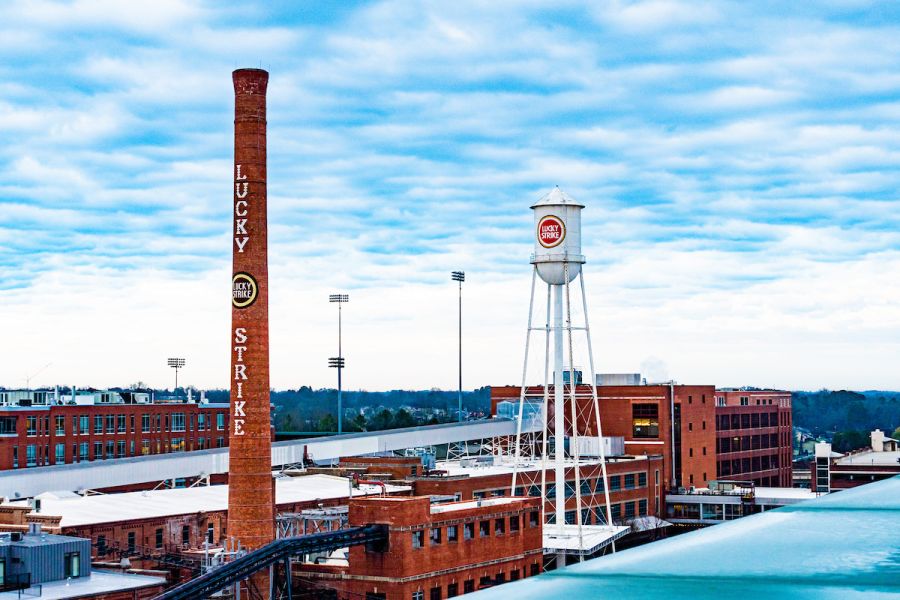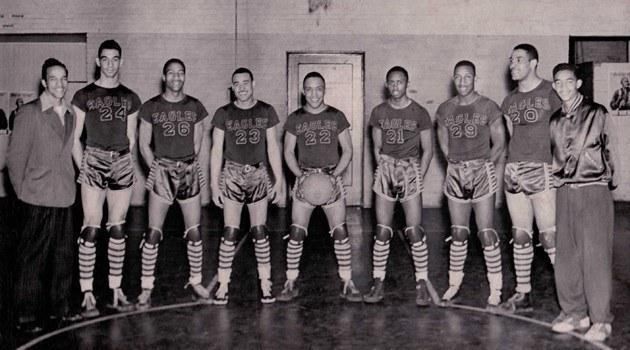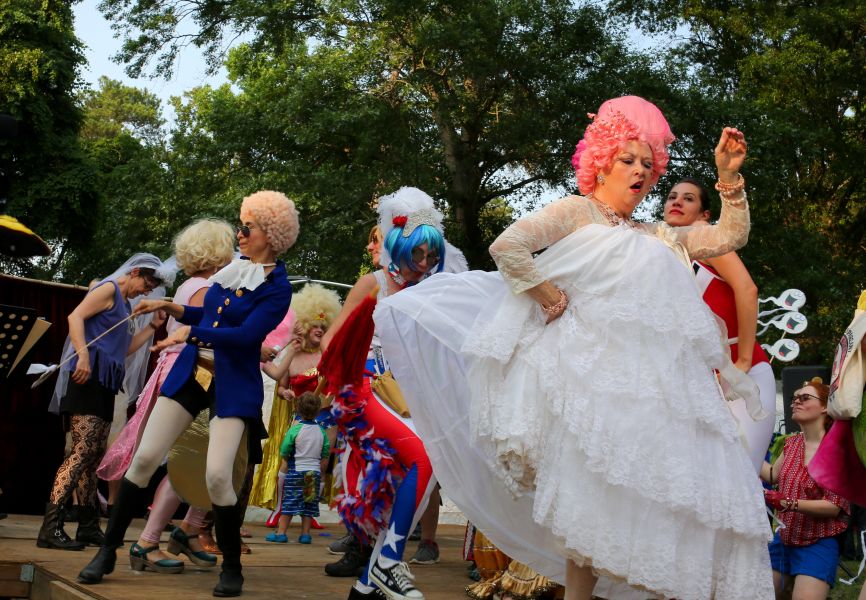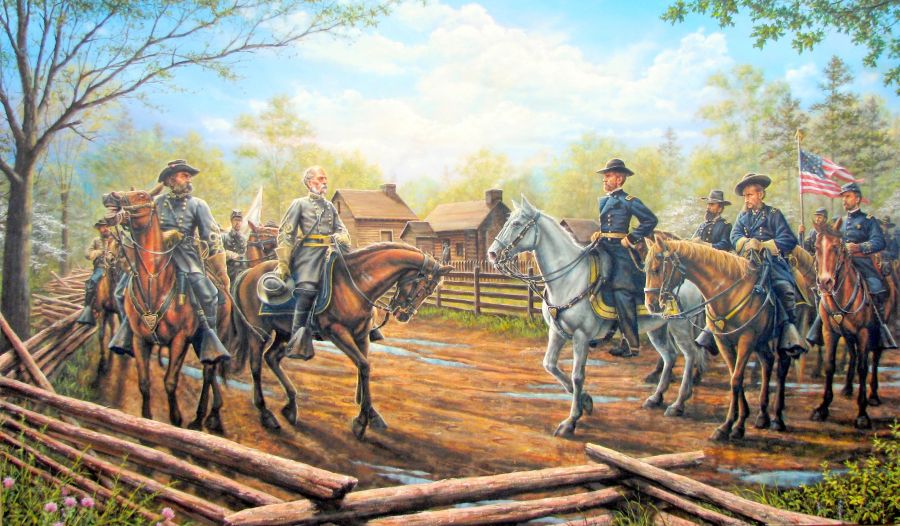Only in Durham
Find out what makes Durham the unique, eclectic, and interesting place it is today

American Tobacco Campus
INTERESTING FACTS ABOUT DURHAM
The American Tobacco Company was one of the original 12 companies listed on the Dow Jones Industrial Average when it was first published on May 26, 1896. Based in Durham until 1987, its former headquarters have been adaptively reused as the American Tobacco Campus.
“Truckin’ My Blues Away,” a song by Durham bluesman Blind Boy Fuller (1907-1941), inspired the popular American saying, “Keep on Trucking.”
Duke’s East Campus, around Baldwin Auditorium, was the Blackwell Fairgrounds and a horse racetrack until 1892. A horse named Baxter took third place in the Kentucky Derby. Nearby is a white-frame, three-story building called the Ark (near the East Campus coffee house). The Ark was built of salvaged wood from the grandstands at the old race track, and it's called the Ark because students had to walk in pairs to make it up the narrow entranceway.
Duke University Hospital was built at the old "Bone Yard" where Durham residents brought their dead cows and horses.
Duke University has five gargoyles, and they are found on various buildings on the University’s West Campus, designed to complement the campus’ neo-Gothic architecture.
William Johnston, a Durham shopkeeper and farmer, who forged ammunition for the American Revolution, served in the Provincial Capital Congress in 1775, and helped underwrite Daniel Boone’s westward explorations.
In 2003, Central Carolina Bank (now Truist) commissioned a 10-foot, one-ton bronze bull named Major the Bull and funded the George Watts Hill Pavilion in Durham Central Park where the bull was cast. Major now resides in downtown Durham's CCB Plaza.

NCCU, Duke Play Illegal, Racially-Integrated 'Secret Game' in 1944
On March 12, 1944, the first racially integrated basketball game in the South was played in Durham between North Carolina College (now North Carolina Central University) and the Duke Medical School. Played behind closed doors at what is now the Women’s Gym on the NCCU campus in defiance of Jim Crow laws, NC College won, 88-44.
The only Rose Bowl game not played in Pasadena was the January 2, 1942, match-up between Duke and Oregon State at Durham’s Wallace Wade Stadium, due to security concerns following the Japanese attack on Pearl Harbor a few weeks earlier. Oregon State won the game, 20-16.
Orange Factory was a textile factory which opened in 1852 along the banks of the Little River in what is now northern Durham County. Orange Factory secured its future with a contract from the Confederate government to manufacture military uniforms. The factory closed in 1938 and the mill community which grew up around it survived until 1987, when it was flooded for construction of the Little River Reservoir.
Lakewood Park was an amusement park which operated from 1905-1926 at the western terminus of the Durham Traction Company’s trolley line, the site of the present-day shops at Lakewood. The 27-acre park, with its roller coasters, swimming pools, and other amusements, was the “Coney Island of the South.” The park was located at the corner of Chapel Hill Road and Jersey Street.

Beaver Queen Pageant
UNIQUELY DURHAM
The Scrap Exchange is a 501(c)(3) non profit Creative Reuses Center that specializes in creative reuse art. Clean, reusable industrial discards and scrap are available for sale to artists, designers, and the general public.
Duke University Chapel’s Blessing of the Animals Worship Service is a celebration of all creatures and creations. All pets are welcome, and dogs and cats are the norm! Horses, snakes, rabbits, iguanas, goats, and pigs routinely attend this annual outdoor service held on the Sunday in October closest to the Feast Day of St. Francis.
The Beaver Queen Pageant is an annual family-friendly event held in late spring that benefits Durham’s Ellerbe Creek Watershed Association. Contestants dress up in elaborate costumes as beavers dressed in drag and are encouraged to bribe the judges. The winner is determined by how much money each contestant raises through a pay-to play voting process.
On March 19, 2011 more than 2,000 residents took vows to Marry Durham, which included promises to protect the city and its reputation and to honor its diversity. Participants dressed as brides and grooms pledged to keep Durham streets clean, protect natural resources, support local business and elect responsible leaders.
Burt Shavitz has long been the symbol of the Burt’s Bees company; his bearded face peers out from under a cap on the company’s logo. Now his home, fondly referred to as Burt's Bees Cabin has become another company symbol – of his values and choice to live simply amid nature. It was moved from Maine to the American Tobacco Campus.

"The First Meeting" by artist Dan Nance
HISTORY
Maplewood Cemetery, located at 1621 Duke University Road between downtown Durham and Duke University’s West Campus is a city-owned cemetery, the final resting place for the remains of many prominent Durhamites. The cemetery’s first burial occurred in 1872. Several headstones mark Confederate veterans of the Civil War.
Bennett Place State Historic Site is the site of the largest troop surrender and the effective end of the Civil War. It was in April 1865 that Confederate general Joseph E. Johnston and his Union adversary, General William T. Sherman decided to meet in Durham at Bennett Place, where Gen. Johnston surrendered the Southern armies in the Carolinas, Florida, and Georgia. That historic event can be explored at this official North Carolina State Historic Site. Today it includes restored historic structures, special living history events, including a commemoration on the anniversary, and tours – all available without any admission fees.
The Duke Homestead State Historic Site, home of the self-made tobacco tycoon Washington Duke, features a restored mid-1800s home, tobacco barns, an original tobacco factory, and a museum. The site interprets the early farming life of the Duke family and the beginnings of their tobacco manufacturing business on the property after the Civil War.
A former plantation, Stagville State Historic Site was once the largest in the South with 900 enslaved people and almost 30,000 acres of land. The site has the preserved quarters of the formerly enslaved as well as slaveholding records where families can trace their history. Tours of the site take approximately one hour with visitors able to tour the Bennehan House, the Holman House at Horton Grove, and the Great Barn.